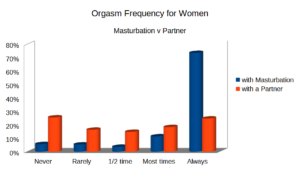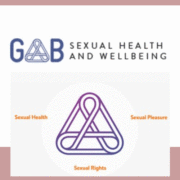Erotic Touch in Sex: What Are We Learning?
Myths and realities of sexual touch and pleasure.
 “What is wrong with me? Why can’t I reach orgasm with intercourse?” This is the question I am getting more often from younger women seeking sex therapy. When probed further, many of these young female clients will say they understand the importance of clitoral touch for sexual pleasure, and yet still insist something is wrong with them for needing it. The most common reason given for this insistence is, “Every woman I ‘see [the implication is in porn] can orgasm without touching the clitoris.” Meanwhile, their male partners can believe there is something wrong with them, because their penis doesn’t give their partner an orgasm.
“What is wrong with me? Why can’t I reach orgasm with intercourse?” This is the question I am getting more often from younger women seeking sex therapy. When probed further, many of these young female clients will say they understand the importance of clitoral touch for sexual pleasure, and yet still insist something is wrong with them for needing it. The most common reason given for this insistence is, “Every woman I ‘see [the implication is in porn] can orgasm without touching the clitoris.” Meanwhile, their male partners can believe there is something wrong with them, because their penis doesn’t give their partner an orgasm.
Where are these unrealistic expectations about the clitoris (and penis) coming from? We have long known about the importance of clitoral touch for women’s pleasure and orgasm. Since the 1950s to 1960s, sex researchers such as Kinsey and Masters & Johnson have emphasized the need for clitoral stimulation to reach orgasm in the majority (70%) of women. Since then, research, guidebooks, and sex therapists all tell us the clitoris is the main sexual organ for women (95% of women focus here during masturbation), and many suggest an average of 20 minutes of stimulation to give women the time to reach orgasm.
Faced with this complaint more often in my practice, I decided to find out where these messages about erotic touch were coming from. Most mentioned porn as a reference, so I started my research there.
How do we learn erotic touch?
Traditionally, we have learned the “workings of sex” from our own experiences, books, or peers. In the ’80s to ’90s, we started seeing more complete visual examples of sex through VHS or DVD movies in the privacy of our own homes. Now, because online porn has become so easy to access, it has become the most common way to discover “the workings of sex” (Litsou et al., 2020). But porn has been changing since it arrived online. Instead of the longer, full-length movies, the shorter clips have become the most accessible. As a result, these highly edited snippets of sexual scenes have become a primary model in setting our expectations of where and how long to touch each other in sex.
So, what is the average porn video teaching us about where and how to touch a woman or man to give them pleasure?
My colleague and I chose 80 of the most-viewed videos from two of the most popular porn companies (Pornhub and XHamster). Then we recorded every single bit of touch, second by second, from sensual (non-genital) touch to each and every type of genital touch: clitoris, labia, vagina, and anus for women; and penis, scrotum, and anus for men.
What did we find? You guessed it. The clitoris is being shortchanged. Only 8% of all genital touch on women in these videos was found to be on the clitoris/labia. That means the women’s main sexual organ, the clitoris, was touched 10 times less than the men’s main sexual organ, the penis (Zebroff, 2023). And because women appear to orgasm easily in porn, the message many viewers are receiving is that women orgasm easily with only 8% of clitoral touch. No wonder so many young women think there is something wrong with them when it takes them “too long” to orgasm with only a fraction of stimulation on their main sexual organ.
This model of erotic touch may also be giving the impression to men (and women) that the vagina is (or should be) much more sensitive to touch than it actually is. No wonder many men are feeling inadequate about being good lovers. This model of sex confuses everyone about the realities of erotic stimulation.
Another difficult finding was that men in these videos received touch almost exclusively on their penis, with only 3% of touch taking place anywhere else on their body (Zebroff, 2023). This goes directly against sexological recommendations of what kinds of touch men need in sex, including sensual, non-genital touch for building arousal and increasing sexual satisfaction. For both men and women.
Some rightly argue that this porn-typical type of erotic touching is “just fantasy,” and that people watching porn know that it isn’t reality. However, one recent study found that if we watch porn frequently, we can start to see it as “the way to do sex” even if intellectually we know it to be unrealistic information. In other words, even though sex educators are working hard to correct this misinformation through words and conversation, the visual representations of sex (especially when paired with arousal and pleasure) tend to be what we internalize, expect (and seek out) in real life sex (Wright et al., 2021).
Porn is not the problem. There is great porn out there, showing longer bouts of clitoral stimulation and realistic pleasure for everyone involved. However, out of the most viewed 80 videos, only two videos broke the trend and offered a decent amount (albeit nowhere near 20 minutes) of clitoral stimulation for women, and none offered a decent amount of sensual touch for men. So, why aren’t we seeing more of these videos? Unfortunately, they can be difficult to find and usually require payment, which excludes most young people who are often limited to what is free. And on the free sites, it is the company algorithms that make the decisions on which type of videos to promote.
Focus on pleasure over orgasm
A growing number of people under (and over) 25 are relying on popular porn to influence what to expect in sex. It is heartbreaking to see these perfectly normal men and women believe there is something wrong with them sexually, when it is our porn distribution system that needs fixing.
The bad news is that we likely have already received these biased messages about erotic touch. The good news is that once aware, we can actively reject those expectations for our own sexual lives. We can pay attention to what we are internalizing, talk about it with our partner, and seek out different porn.
And the better news is that we already have the answer hidden inside ourselves. The erotic touch that makes for great sex is what feels good to you (and your partner). Let’s not blame ourselves for having different needs from porn actors. Instead, we can turn our attention to our own internal cues of what feels good.
Take some time to explore your own body’s capacity for pleasure. Start small. Slow down. Remember the touch that felt good in the past. Explore your own body. Explore your partner’s body. Include all types of touch. Touch everywhere and note what feels good for you. And share your discoveries with our partner. You will be glad you did.
References
Litsou, K., Byron, P., McKee, A., & Ingham, R. (2020). Learning from pornography: results of a mixed methods systematic review. Sex Education, 21:2, 236-252.
Wright, P. J., Tokunaga, R. S., Herbenick, D., & Paul, B. (2021). Pornography vs. sexual science: The role of pornography use and dependency in U.S. teenagers’ sexual illiteracy. Communication Monographs, 89(3), 332-353.
Zebroff, P. (2023). Gender Differences in Duration and Location of Erotic Touch in Mainstream Heterosexual Pornography. The Canadian Journal of Human Sexuality, e20220060.



